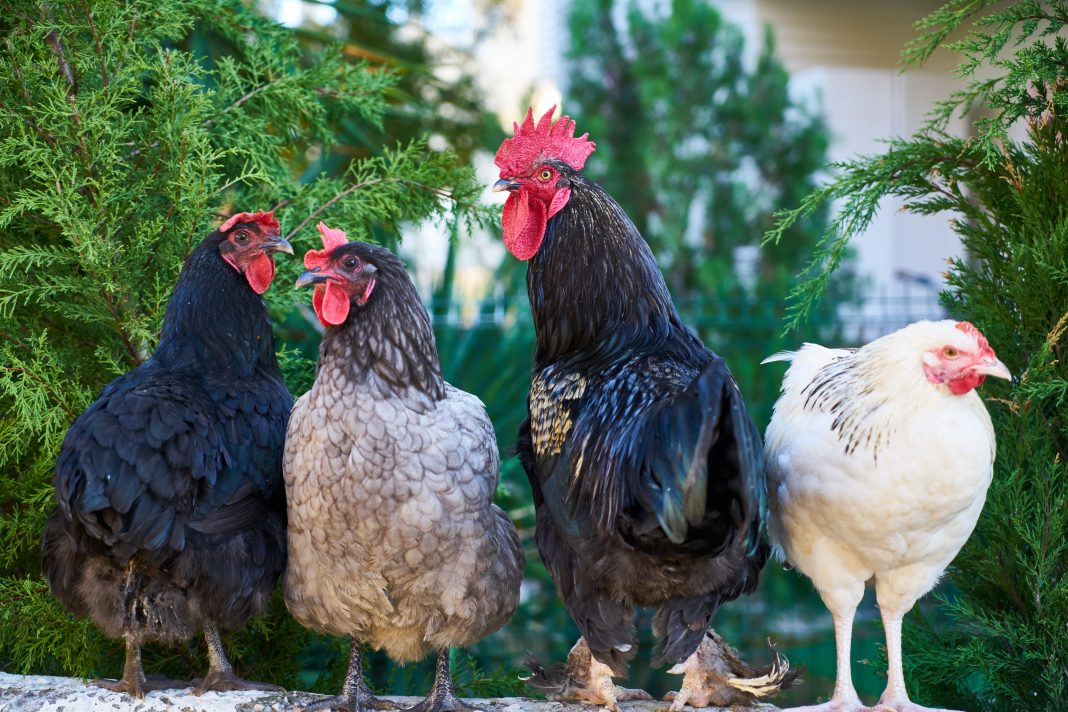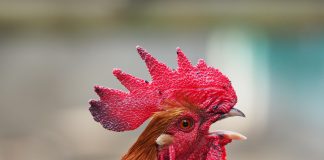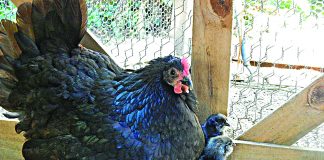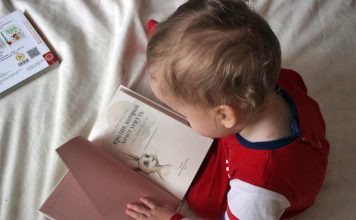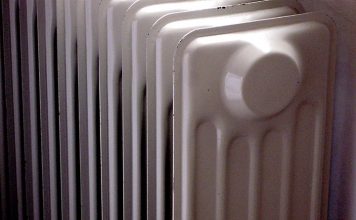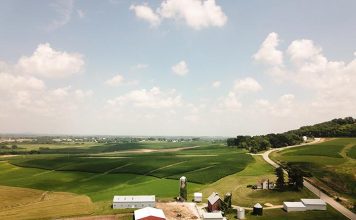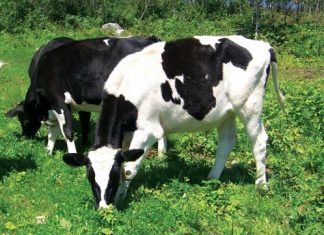|
By Connie Rabun
|
|
| Issue #127 • January/February, 2011 |
In the beginning we had chickens…and no coop! Any homesteader knows that the number one rule is to always have your animal housing prepared before you invest in the animal. We knew the rule but we ignored it! We are still forging our way into mistakes and ignoring smart advice, and I reckon that is how we got started with our chickens. All of a sudden (or so it seemed) we had 30 layer chicks and no permanent place to put them. By the time they outgrew their box in the house, we knew we had to do something. I can’t stand to see an animal in a pen with no “natural” browsejust mud and yuckso I had a pretty good idea of what I wanted in the way of a moveable coop for my chickens. Wonderful hubby and I set about in the scrap lumber pile on the farm and created a moveable brooder pen that could grow with the chicks until they were ready for a big pen. We were instantly “chicken-tractor” fans.

Closeup of spot welds attaching cattle panel to purlin |

The “people” end of the pen during constructionnest boxes are in place. |

Nest box door for easy access to eggs without entering the pen. (note the cattle panel still in place) |

Wheel on bolt axle |

Closeup of “trailer hitch” with dolly lifting the frame |

Closeup of homemade door hinge |

Roosts are notched and attached to cattle panel with wire |

Final wrap with used billboard tarp purchased for $20 |
|
That was 10 years ago on 10 acres in Texas. We have now updated our homestead to an 80-acre farm here in the beautiful Missouri Ozarks and we are still chicken owners (among the milk cows, hogs, rabbits, wildlife, and seven children). However, we have never built the ideal chicken tractor until my homestead hubby said he would come up with something. I reminded him that it had to be where our ladies were free to browse, yet contained. They had to be protected from ground varmints and from flying predators. It would be nice if it had an egg checking door and was easy enough to move that the children could handle it and after “the look” that says “I love you” (he always gives me that look when I am trying to tell him how to do something) I left the planning up to him. What resulted is the first chicken tractor that we are really happy with.
We built our prototype coop a little smaller than the one we planned for the layers with the intention of using it for the broilers we raise in the spring and fall. After using it for a year, we decided to build the real thing. We made the second version larger to permanently accommodate our laying flock of 30 chickens along with all the amenities. First we had to see what materials we had on hand to build it out of. Since my husband has a race engine/metal fabrication shop, metal scraps are plentiful. We like to build with metal for its strength and durability (never mind that Mr. Wonderful is a weldernot a carpenter).
The frame
We started our pen with two 25-foot purlins as the base to make it easy to attach the cattle panels to. The purlins have the added benefit of having some “flex” for those not so perfectly flat spots like we have here in the Missouri Ozarks. He cut and bent the purlin to make the ends 11 feet long and the sides 14 feet long. Next, we spot-welded cattle panels to the purlin, arching them to make the Quonset hut style. Because we wanted this coop to be cheap, and because cattle panels are expensive, we gave up the idea of making the coop tall enough to stand in easily, and just used the arched cattle panels. This makes the middle height (which is the highest) approximately five feet. We overlapped edges of the cattle panels for added strength. On the ends of the pen, we had to cut the panels to fit the arch, which incurred a little waste. All together we used six cattle panelsfour down the length and one on each end. After he had the cattle panels secured, we wrapped the sides of the pen in 48-inch chicken wire on top of the panels, then we made one wrap up and over the far end of the coop (where it would not be covered with the tarp) to prevent anything crawling in and deciding to have lunch. We attached the chicken wire to the cattle panels with small pieces of safety wire.
The door end
Next we had to make the “people” end of the coop. This end of the coop would be enclosed in order to give the coop three closed sides and one open. We cut the door out of the cattle panel end and built the door frame out of some scrap rebar. We framed the door from rebar also, then attached the cut out piece of cattle panel to it. We hung the nest boxes (picked up on the side of the road for $20) to the right of the door on the inside of the coop. We decided to leave the cattle panel in place behind the nest boxes, since hands will easily fit through the squares to gather eggs, and framed up a door out of rebar. We opted to cover the “people” end of the coop with old barn tin, adding even more character and beauty to our designer chicken tractor (besides, the tin has been piled beside the barn for years). We cut the tin to match the shape of the hoop, and also covered the door to make it even more predator proof. Mr. Wonderful made a door latch by welding a nut to the rebar door frame and a matching nut to the coop that would align when the door was closed. He welded a pin on a chain to the coop (so it wouldn’t get lost). Now when we close the door, we simply drop the pin into the nuts and it is latched. He made the hinges for the door by screwing a nut onto a bolt, then welding the bolts to the door and the nuts to the coop. It works wonderful. Every time the door opens, it just turns in its little nut. We built the door for the eggs the same way, except that it is just covered with the old tin, no cattle panel since we left it on the coop. Once we had the human end of the coop done, it was time to install some roost poles. We installed them in about the middle of what was going to be the tarped area, that way they are out of the rain. We went into our woods and cut some long skinny trees, which we notched on each end to make them fit over the cattle panel wire, and then wedged them into place. We safety-wired the ends to the panel also to prevent a collapse, and placed two safety wire supports in the middle for added stability. The installation of the tarp cover was next. We used a tarp for the top cover, which we secured with tie wraps onto the coop to keep the wind from whipping it around. It covers the entire top of the coop except for the final three feet, which we had wrapped in chicken wire to be able to keep it open for more sun exposure. We have found that a regular tarp will last about one year in the elements, but if you can get your hands on used billboard tarps, they will last two to three years.
The moving mechanisms
After having the coop mostly complete, all we lacked was a way to move it. We wanted it to be easy to move so that the children could handle it themselves. This was mostly accomplished with the light weight of the metal, but we needed wheels and a pull/push system. We opted to buy a set of solid lawn mower wheels which cost about $8 each. On one end of the coop we welded a bolt onto each corner to mount each tire. We also welded a bolt on the top of the frame on each corner as a place to store the wheel when not in use, since we remove the wheels every day to keep out any digging critters. With the wheels stored right on the coop it is easier for the children to keep track of them. We wanted to be able to make very sharp turns with the coop, so that we could maneuver the chickens through the orchard. The Chief Engineer came up with an idea to make the tongue like a ball and hitch on a trailer, which would allow the sharp turns. He took a very heavy duty 5/8-inch washer and welded a nut on each side of it. He then started a bolt on each nut and welded the head of each bolt (in essence welding the whole thing) to the inside of a 4-inch piece of “C” purlin. This allows the washer nuts to pivot in the bolts attached to the piece of purlin. Then, he welded the purlin “hitch” to the coop.
We then took a moving dolly, cut off the base, and welded a bolt onto that spot (making it the “ball” of our hitch) where it would be able to fit into the hitch on our coop. With this setup, you can pivot the coop completely in a circle. It really does work nice for making sharp turns.
To us, this coop is exemplary of the ingenuity we homesteaders can come up with. We all learn to use what we have available and make it work. This saves us money up front, allowing us to continue in our humble, quiet life on our farms. In the end, it saves us time also. Together as a family we built it and when I have my coffee on the porch in the mornings, and look out at designs like this, I sometimes wonder at it all. We have no complaints about our new chicken tractor, and that in itself is a miracle! This pen has given us two years of service now and we wouldn’t change anything. We have ease of movement, safety, pasture, and not a lot of cost involved. Chalk it up as another successful homestead venture. Now I wonder if Mr. Wonderful would be interested in working on a rabbit hutch next?


